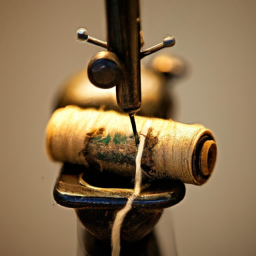
History of Tailoring in Nigeria
Introduction
Tailoring in Nigeria has a rich history that dates back centuries. It plays a significant role in the country’s culture and has undergone various transformations over time. Nigerian tailors are renowned for their artistry and craftsmanship, creating garments that reflect the traditions, lifestyles, and fashion preferences of the people.
Early Influences
The roots of Nigerian tailoring can be traced back to traditional African clothing styles. Prior to the colonization era, Nigerian men and women wore garments made from locally sourced materials such as animal skins, plant fibers, and woven fabrics. These clothes were often hand-sewn and adorned with intricate embroidery and embellishments.
With the arrival of European traders and colonialists, the Nigerian fashion scene witnessed the introduction of Western clothing styles. This led to a merging of traditional and Western tailoring techniques, giving birth to a new era of Nigerian fashion.
Growth and Evolution
In the post-colonial era, Nigerian tailoring experienced tremendous growth and evolution. Local designers started incorporating modern fabrics, patterns, and designs into their creations. This period saw the rise of fashion boutiques, fashion shows, and an increasing demand for Nigerian-made clothing.
Tailoring schools and institutions were established to train aspiring fashion designers, allowing them to refine their skills and explore their creativity. These institutions played a crucial role in nurturing talent and fostering the growth of the Nigerian fashion industry.
Nigerian Fashion Today
Today, Nigerian fashion has gained international recognition for its unique blend of traditional and contemporary styles. Nigerian designers regularly showcase their collections at renowned fashion events around the world, bringing African fashion to the global stage.
The advent of social media platforms has also played a significant role in promoting Nigerian tailoring. Fashion influencers and bloggers use these platforms to showcase Nigerian designs, increasing their visibility and reach.
Furthermore, the thriving Nigerian film industry, known as Nollywood, has contributed to the popularity of Nigerian fashion. Nollywood movies often feature characters wearing exquisite Nigerian-designed outfits, inspiring viewers to embrace their cultural heritage and support local fashion designers.
Conclusion
The history of tailoring in Nigeria is a testament to the country’s rich cultural heritage and its ability to adapt and embrace new influences. Nigerian tailors continue to preserve and celebrate traditional craftsmanship while incorporating modern trends.
As Nigeria’s fashion industry continues to grow and flourish, it is essential to recognize and appreciate the contributions made by the talented tailors who have shaped its history. They have not only transformed the way Nigerians dress but have also made a significant impact on the global fashion scene.
So, the next time you wear a Nigerian-designed outfit, remember the long and captivating history of tailoring that has paved the way for the vibrant Nigerian fashion we admire today.




